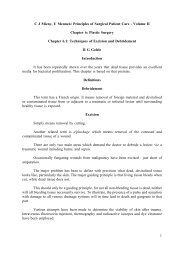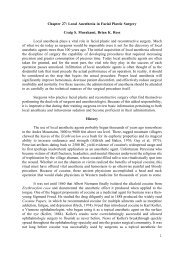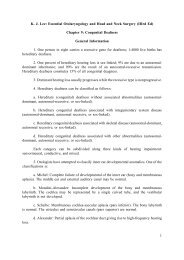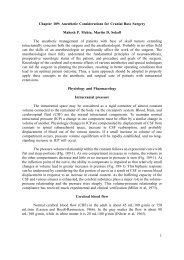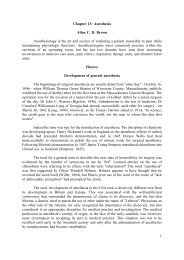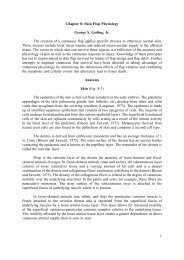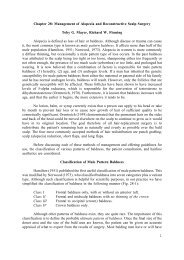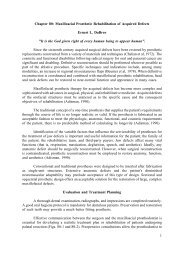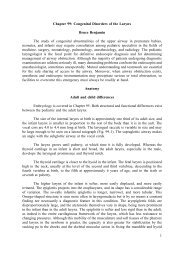Create successful ePaper yourself
Turn your PDF publications into a flip-book with our unique Google optimized e-Paper software.
9. Palate.10. Tonsillar fossa.Note: Paddle can be divided and folded onto itself to form an inner and outer closure.Drawbacks1. Pedicle rests on the clavicle which may cause decrease in vascularity.2. Bulkiness.3. Change in chest wall appearance, especially in younger women.4. McFee's incision is necessary for tunneling flap - this may be hazardous in postirradiatednecks following previous radical neck dissection.Latissimus Dorsi (LD)AnatomyThe largest and first utilized of the myocutaneous flaps, this fan-shaped muscle arisesfrom the posterior portion of the iliac crest, the lumbar fascia, and the spines of the lower sixthoracic vertebrae (deep to the trapezius). Other muscle bundles arise from the lower threeor four ribs and fibers have been recognized from the inferior angle of the scapula. All ofthese bundles converge to a single tendinous insertion. The tendon wraps around the teresmajor muscle and inserts to the floor of the bicipital groove of the humerus.Arterial Supply1. Thoracodorsal branch from the subscapular artery.Nerve Supply1. Thoracodorsal nerve: from the posterior cord of the brachial plexus.LD ActionThis broad, fan-shaped muscle is best appreciated in trained athletes (especiallyswimmers). It extends, adducts, and medially rotates the arm.Operative Technique for Latissimus Dorsi Flap1. Place the patient in a lateral decubitus position.2. Draw the paddle obliquely along the long axis of the muscle with the lateral borderon the lateral margin of the muscle.16




